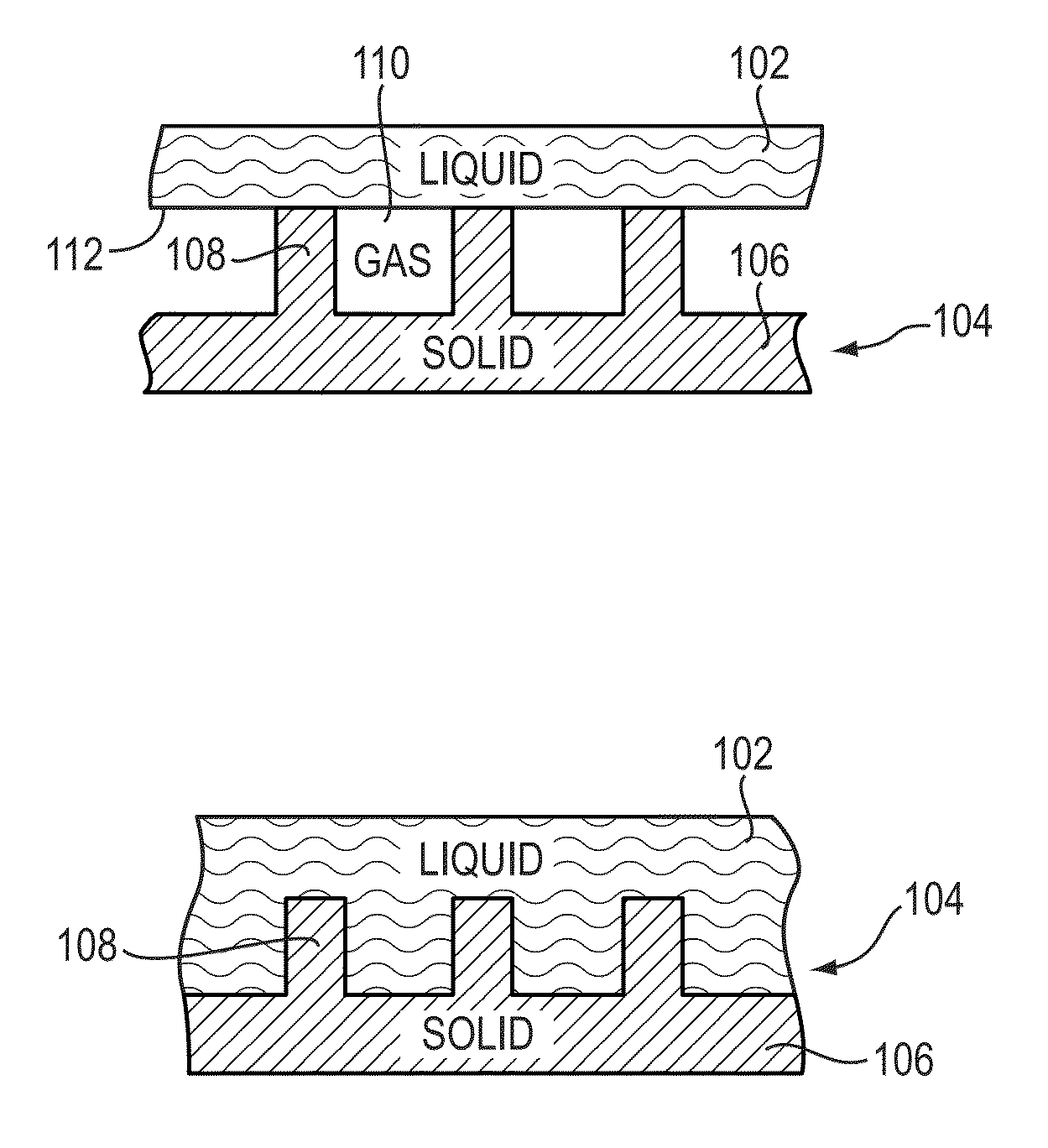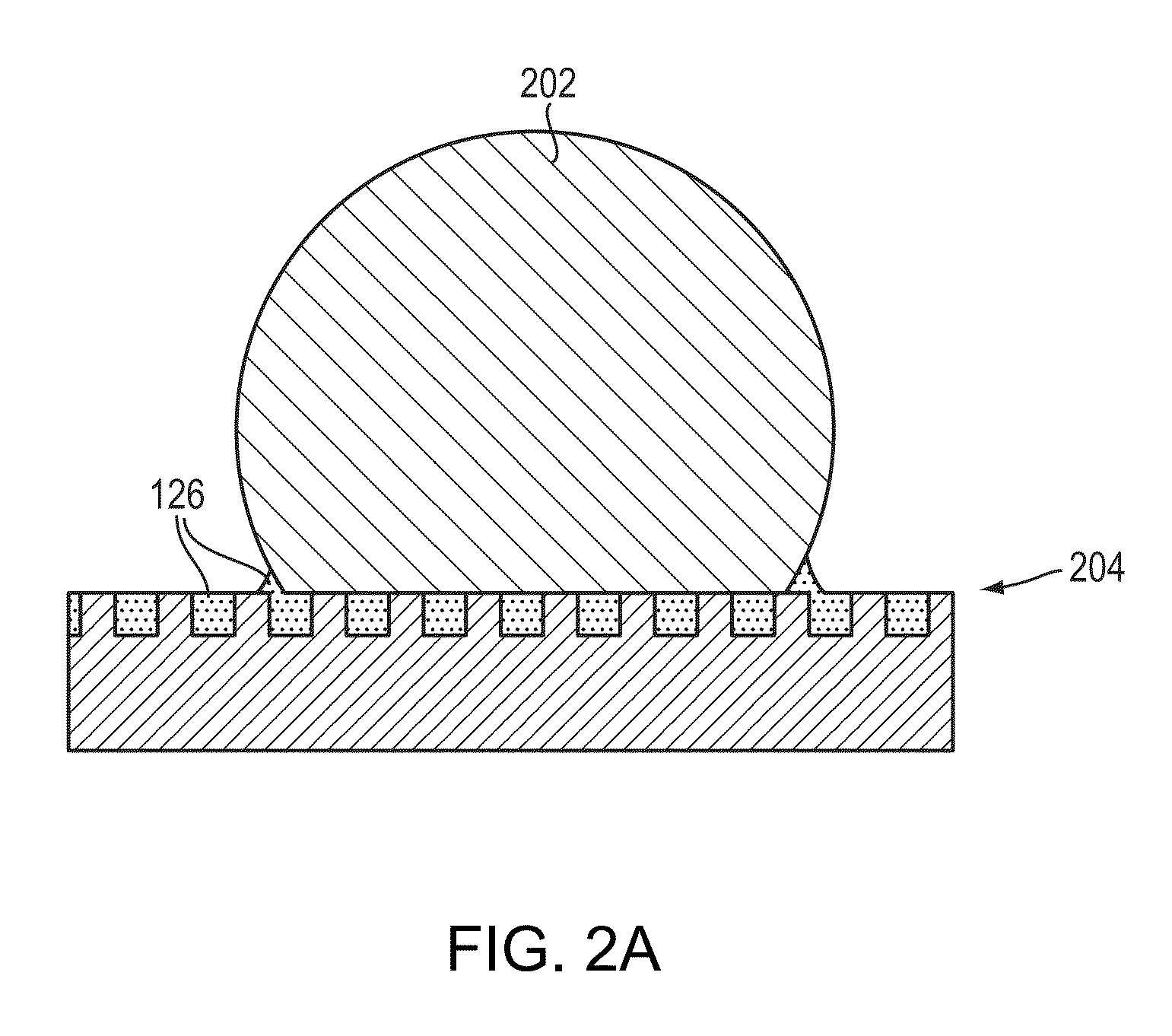Liquid-Impregnated Surfaces, Methods of Making, and Devices Incorporating the Same
a liquid impregnated surface and liquid technology, applied in mechanical equipment, transportation and packaging, light and heating equipment, etc., can solve the problems of affecting the adhesion of liquid impregnated surfaces, etc., to achieve a wide range of effects, reduce drag, and enhance slippag
- Summary
- Abstract
- Description
- Claims
- Application Information
AI Technical Summary
Benefits of technology
Problems solved by technology
Method used
Image
Examples
Embodiment Construction
[0085]FIG. 3 includes a photograph of a microtextured surface 302, in accordance with certain embodiments of the invention. The surface 302 was made of silicon and includes a square pattern of 10 μm pillars spaced 25 μm apart. As depicted, a bottom portion 304 of the surface 302 was impregnated with hexadecane (an impregnating liquid), while a top portion 306 was impregnated with air (i.e., no impregnating liquid). An edge 308 of the hexadecane defines a boundary between the top portion 306 and the bottom portion 304. Impregnation with hexadecane was achieved by (i) dipping the bottom portion 304 of surface 302 in a bath of hexadecane and (ii) withdrawing the bottom portion 304 from the hexadecane at a slow rate (10 mm / min), with the help of a dip coater. The impregnation was robust as the hexadecane remained in place while being sprayed with water jets having an impact velocity of approximately 5 m / s. Contact angle hysteresis and roll-off angle for a 7 μL water droplet were measure...
PUM
| Property | Measurement | Unit |
|---|---|---|
| Length | aaaaa | aaaaa |
| Length | aaaaa | aaaaa |
| Thickness | aaaaa | aaaaa |
Abstract
Description
Claims
Application Information
 Login to View More
Login to View More - R&D
- Intellectual Property
- Life Sciences
- Materials
- Tech Scout
- Unparalleled Data Quality
- Higher Quality Content
- 60% Fewer Hallucinations
Browse by: Latest US Patents, China's latest patents, Technical Efficacy Thesaurus, Application Domain, Technology Topic, Popular Technical Reports.
© 2025 PatSnap. All rights reserved.Legal|Privacy policy|Modern Slavery Act Transparency Statement|Sitemap|About US| Contact US: help@patsnap.com



